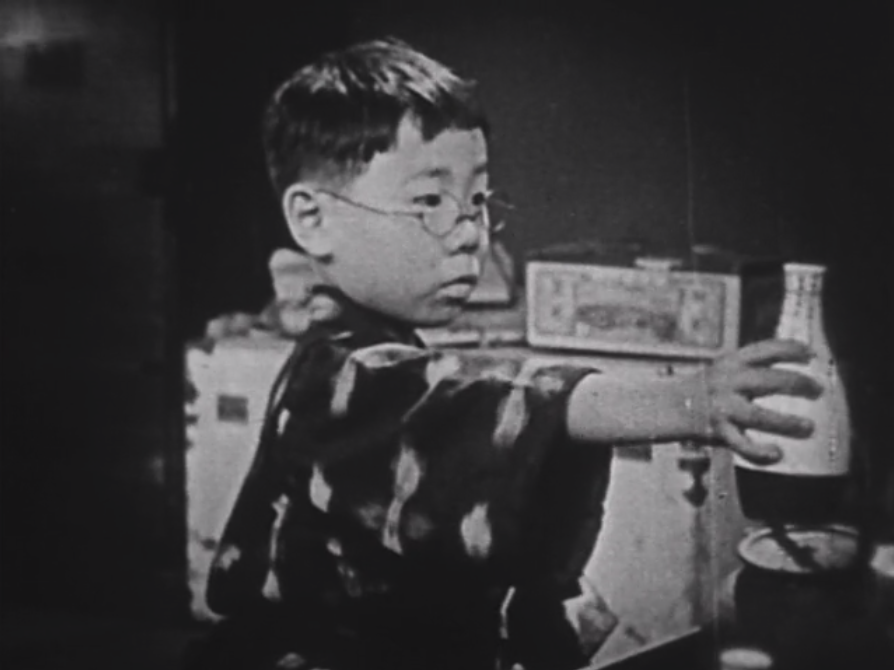The destruction of vintage Asian cinema ranks among the great misfortunes of twentieth-century art. In Japan’s case, cataclysmic events leading up through World War II (the 1923 Great Kanto Earthquake, the firebombings of Tokyo) wiped out, per one estimate, ninety-six percent of that country’s silent movies;1 and numerous extant sound pictures after the war vanished following confiscation by the Allied Powers—or were intentionally burned before the foreign occupants could see them. As such, the filmographies of early Japanese masters remain incomplete. The thirty-eight silent features Heinosuke Gosho made before his acclaimed talkie The Neighbor’s Wife and Mine (1931) have been lost, along with several pictures that came afterward. Sadao Yamanaka shot twenty-six revolutionary period dramas (the last being 1937’s Humanity and Paper Balloons, which impressed a young Akira Kurosawa);2 three survive in addition to clips of two others.
Not spared of the above mentioned cataclysms was the career of Yamanaka’s close friend, Yasujiro Ozu. The maker of Late Spring (1949) and Tokyo Story (1953) shot thirty-four silent pictures between 1927-1936; of the remaining seventeen, several exist in fragments—a major frustration for Japanese cinema fans. I Graduated, But… (1929) takes its title from a popular slogan mocking employment promises in 1920s Japan,3 but the story’s merely summarized via eleven extant minutes. A Mother Should Be Loved (1934), widely considered a lesser entry in Ozu’s oeuvre, might end more satisfyingly with the restoration of its missing last reel. And we’re completely deprived of films that tantalize researchers with glowing reputations (1930’s Young Miss) or subject matter not usually associated with Ozu (1930’s The Revengeful Spirit of Eros). Still, hope ensues for these movies and others—as embodied in the recent uncovering of a longer version of the comedy A Straightforward Boy.
The last of six films Ozu made in 1929, A Straightforward Boy was conceived as a vehicle for child actor Tomio Aoki, who’d co-starred in the director’s earlier The Life of an Office Worker. “Aoki was so much fun,” Ozu recalled, “that I decided to make him the [lead] in my next film.”4 While credited to an original story by “Chuji Nozu” [a portmanteau alias for Ozu, his mentor Tadamoto Okubo, and screenwriters Tadao Ikeda and Kogo Noda: “Chuji” deriving from the kanji character chu present in Ikeda and Okubo’s names, “Nozu” fashioned from (No)da and O(zu)],5 the picture bears a passing resemblance O. Henry’s short story The Ransom of Red Chief. The setting’s transported from the American Deep South to a Japanese slum, where a petty crook (Tatsuo Saito) kidnaps a rambunctious kid (Aoki)—after buying him toys and snacks. As in the above mentioned story, the kid’s returned after his antics overwhelm the crook’s boss (Takeshi Sakamoto).
Originally thirty-eight minutes long, A Straightforward Boy was a career milestone for Aoki, who thereafter adopted the stage name ‘Tokkan Kozo’ (taken from the film’s Japanese title). He continued acting until age sixteen—along the way completing three more Ozu projects: 1932’s I Was Born, But…, 1933’s Passing Fancy, and 1935’s An Inn in Tokyo—sporadically resuming film work throughout adulthood. However, his breakout movie has, for the longest time, only been available via fourteen fragmentary minutes that lose the picture’s entire beginning. According to Kogo Noda, A Straightforward Boy originally started with a spinning wind gauge and shots of the Central Meteorological Observatory of Tokyo.6 These are absent in circulating prints, which begin with the petty crook trying to find a hostage. Succeeding scenes of him escorting the boy flow skimpily, hampered by missing footage.

Still, this fractured comedy is a worthwhile glimpse into Ozu’s early career—and a contrast against his iconic later works. Although the director under discussion took more influence from the west than is sometimes acknowledged, he displayed his Hollywood affinity most prominently in those early years: gangster pictures rife with fast cars, guns, and fistfights; slapstick comedies in the vein of Harold Lloyd; dynamic camerawork he’d never permit later on. A Straightforward Boy is visually tame compared to some of its contemporaries but nonetheless thrives on physical gags—e.g., the kid repeatedly shooting rubber darts at the boss’s bald spots. And according to University of Nagano professor Hideo Tsukiyama, who acquired the longer print mentioned before, the new footage contains additional slapstick as well as material “staged in a more Ozu-like manner.”7
This longer 16mm cut—featuring six extra minutes—was announced on May 13, 2023, at Yokohama’s Kanagawa Museum of Modern Literature. It’s not been made publicly available, though Tsukiyama’s expressed hope it will be. Reverting to an earlier point: such a discovery leaves one optimistic for other vintage films deemed missing or incomplete. Even the manner in which this cut was found is inspiring. Sometimes films are unearthed in vaults, in other cases off the beaten path (e.g., the original version of Carl Theodore Dreyer’s 1928 The Passion of Joan of Arc turning up in a mental institution’s closet). The twenty-minute print of A Straightforward Boy was purchased at an online auction: yet another reminder of the unexpected venues where lost pockets of cinematic history have been given new life.
Works cited and further reading:
- Russell, Catherine. The Cinema of Naruse Mikio: Women and Japanese Modernity. Durham: Duke University Press, 2008, p. 52
- Sato Kimitoshi. “Sadao Yamanaka: Something Forever New.” The Complete (Existing) Films of Sadao Yamanaka, Eureka! DVD, 2013, p. 34
- Bordwell, David. Ozu and the Poetics of Cinema. Princeton: Princeton University Press, 1988, p. 193
- “A Straightforward Boy.” http://www.a2pcinema.com/ozu-san/films/astraightforwardboy.htm
- Bordwell, p. 195
- “A Straightforward Boy.”
- Ishitobi Noriki. “Longer version of Yasujiro Ozu’s ‘Straightforward Boy’ film found.” Asahi Shinbun 7 June 2023
